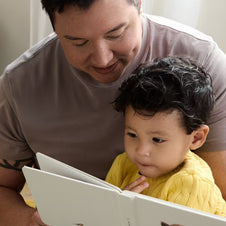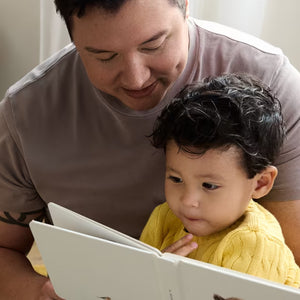The combination of Daylight Savings Time and baby or toddler sleep can cause stress for many families. I know it feels as though this time adjustment was created to wreak havoc in our lives, but I actually have some really good news about the “spring forward” Daylight Savings adjustment. If your baby or toddler is an early riser, adjusting the clock an hour later just solved your problem. What used to be a 5:30 am wake time will now be a 6:30 am wake time!
Taking Cara Babies Classes
Head to my blog on Daylight Savings: Fall Back and your Baby’s Sleep if you’re worried about Daylight Savings ending in the fall.
How to prepare your baby or toddler for Daylight Savings starting in the spring:
Plan #1: Just “spring forward” with your whole schedule.
That means you’ll essentially do nothing. Simply forget the time has changed and maintain your normal routine. Your baby or toddler will simply be on a new schedule that is one hour later.
How do you do that? Allow your baby or toddler to wake at their normal wake time, which will naturally be an hour later on the clock. So, if you had a 6:00 am wake time and a 7:00 pm bedtime, following the clock change, you’ll have a 7:00 am wake time and an 8:00 pm bedtime. Voilà, that was easy!
Here’s an example of what that might look like for a baby:

Text version of Maintaining Schedule after "Spring Forward" 2 Nap Schedule
| None | Wake | Wake Window | Nap 1 | Wake Window | Nap 2 | Wake Window | Bedtime |
|---|---|---|---|---|---|---|---|
| Saturday (before the time change) | 6:00 am | 3 hours | 9:00 - 10:30 am | 3 hours | 1:30 - 3:30 pm | 4 hours | 7:00 pm |
| Sunday (after the time change | 7:00 am (new time) | 3 hours | 10:00 - 11:30 am (new time) | 3 hours | 2:30 - 4:30 pm (new time) | 4 hours | 8:00 pm (new time) |
Here’s an example of what that might look like for a toddler:

Text version of Maintaining Schedule after "Spring Forward" 1 Nap Schedule
| None | Wake | Wake Window | Nap | Wake Window | Bedtime |
|---|---|---|---|---|---|
| Saturday (before the time change) | 6:00 am | 6 hours | 12:00 - 2:00 pm | 5 hours | 7:00 pm |
| Sunday (after the time change | 7:00 am (new time) | 6 hours | 1:00 - 3:00 pm | 5 hours | 8:00 pm (new time) |
For some, Plan #1 is just not feasible. There are families who have to be out the door at a certain time in the morning, so allowing your baby or toddler to “sleep in” just isn’t possible.
Another scenario where this wouldn’t work is for babies or toddlers who have a bedtime of 8 pm or later. Let me explain why: Most little ones have a “sweet spot” bedtime of 7:00-8:00 pm. After 8:00-8:30 pm, babies and toddlers get a “second wind” and become overtired. If we did nothing with the schedule, an 8:00 pm bedtime will be a 9:00 pm bedtime after the time change. This is simply too late for most babies and toddlers. It can cause multiple night wakings and even earlier mornings.
This leads us to Plan #2.
Plan #2: Adjust very gradually.
The week before the time change, adjust your baby’s entire schedule by 10 minutes each day.
Here’s the plan: Wake your baby 10 minutes earlier than normal each morning. (I know, this will hurt your heart!) Aim for bedtime 10 minutes earlier each day too.
After the time change on Sunday, you will have your exact schedule intact.

Text version of Gradual "Spring Forward" Plan for a 2-Nap Schedule
| None | Wake | Wake Window | Nap 1 | Wake Window | Nap 2 | Wake Window | Bedtime |
|---|---|---|---|---|---|---|---|
| Typical Schedule | 7:00 am | 3 hours | 10:00 - 11:30 am | 3 hours | 2:30 - 4:00 pm | 4 hours | 8:00 pm |
| Tuesday | 6:50 am | 3 hours | 9:50 - 11:20 am | 3 hours | 2:20 - 3:50 pm | 4 hours | 7:50 pm |
| Wednesday | 6:40 am | 3 hours | 9:40 - 11:10 am | 3 hours | 2:10 - 3:40 pm | 4 hours | 7:40 pm |
| Thursday | 6:30 am | 3 hours | 9:30 - 11:00 am | 3 hours | 2:00 - 3:30 pm | 4 hours | 7:30 pm |
| Friday | 6:20 am | 3 hours | 9:20 - 10:50 am | 3 hours | 1:50 - 3:20 pm | 4 hours | 7:20 pm |
| Saturday | 6:10 am | 3 hours | 9:10 - 10:40 am | 3 hours | 1:40 - 3:10 pm | 4 hours | 7:10 pm |
| Sunday (after the time change) | 7:00 am (new time) | 3 hours | 10:00 - 11:30 am (new time) | 3 hours | 2:30 - 4:00 pm (new time) | 4 hours | 8:00 pm (new time) |
If you are following wake windows, maintain them throughout the day, just like you normally do, but base them off your earlier wake time. Ensure bedtime is ten minutes earlier.
If you have set nap times, you’ll simply shift each nap 10 minutes earlier each day.
Toddler Tip: Did you notice that I didn’t provide an example schedule for toddlers here? That’s because this very gradual approach typically isn’t necessary (or even helpful) for toddlers.
Plan #3: Adjust over the weekend.
On Sunday morning after the time change, go wake your baby or toddler at their “normal” wake time. (ie. Your little one normally wakes at 6:45 am; go wake them up at 6:45 am. Keep in mind that it will feel like 5:45 am.) If you are following wake windows, maintain them throughout the day, just like you normally do.
Will your baby or toddler be a little tired that day? Yes, probably. BUT, this will help their body be ready for “normal” nap times and bedtime.
Will it go perfectly? Maybe. Maybe not. Keep your consistent routines, watch your baby or toddler, and adjust as needed throughout the week, just like you always do.
My best tips for how to help your baby or toddler adjust to spring forward and Daylight Savings:
1. Light
Light exposure is your #1 tool to help adjust your baby or toddler’s schedule. If you can, get outside in the daylight during awake time. An hour before bedtime, do just the opposite. Pull the curtains, dim the lights, and turn off the screens in your home. Consider investing in some good blackout curtains (use code Cara for 10% off). Just a bit of light seeping through at bedtime can truly impact sleep. If you don’t have blackout curtains, dark sheets or even black construction paper taped over the windows can work too. (No matter what you use, make sure your window coverings are out of your baby or toddler’s reach.)
2. Routine
You likely already know how important a bedtime routine for your baby or your toddler can be for cueing your little one’s brain that sleep is coming. Let’s say your bedtime routine goes something like this: dim the lights, offer a bedtime feeding, swaddle/put on a sleep sack/get cozy in bed, and read a book. Maintain this routine! The bedtime routine is often way more important in preparing their body for sleep than the hour hand on a clock.
Don’t have a bedtime routine yet? You can start today!
Expert Toddler Tip: Even if your toddler isn’t acting tired, start their bedtime routine at the normal time to give them enough time to wind down before bed.
3. Patience
Be patient. It takes time to adjust to a clock change. Just give your little one some grace, and while you’re at it, go ahead and give yourself some too.
Have a baby? Try to go with the flow and watch YOUR baby’s sleepy cues. If your baby needs a mini cat-nap in the late afternoon as their schedule is being shifted, allow it. If bedtime needs to happen just a bit earlier or later, that’s okay. Remember, they’re a human, not a clock. They will adjust.
Have a toddler? Your toddler may take a few days to adjust to Daylight Savings. Continue with their typical sleep schedule and follow a plan to help them spring forward. Consider using an OK-to-Wake clock. These can be a great visual reminder for when it’s time for sleep.
4. More Help
You don’t have to struggle alone. I have classes that can help whether you have a newborn (0-4 months), a baby (5–24 months), or a toddler (2-4 years). If you’ve taken one of my classes, know that 1-on-1 help is available by adding a phone consult at any time.










